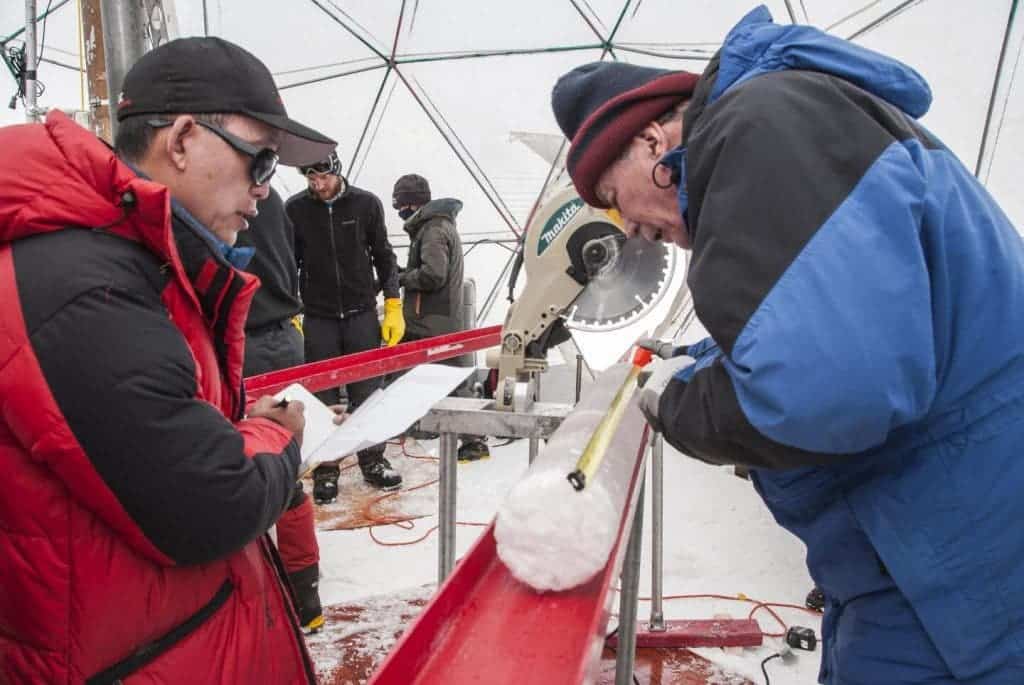The viruses, recovered from two ice core samples taken from the Tibetan Plateau, are new species to science, and they’re unlike anything we’ve ever seen. Researchers say these could help us shed new light on viral evolution, but concerns also loom.

There are diseases in the ice
In a sense, glaciers are time capsules, preserving information from thousands of years ago. This information can relate to past climate, atmospheric chemistry, or even past inhabitants.
“These glaciers were formed gradually, and along with dust and gasses, many, many viruses were also deposited in that ice,” said Zhi-Ping Zhong, lead author of the study and a researcher at The Ohio State University Byrd Polar and Climate Research Center who also focuses on microbiology. “The glaciers in western China are not well-studied, and our goal is to use this information to reflect past environments. And viruses are a part of those environments.”
Viruses and other microbes can survive thousands of years, frozen in ice. In a new study conducted by researchers from Ohio State University, researchers analyzed ice cores from the Guliya ice cap in the Tibetan Plateau. The cores, which date as far back as 14,4000 years ago, revealed 33 viruses, 28 of which were completely unknown to science.
Identifying and classifying viruses is harder than with other species, and the process of cataloging them typically takes a while. Still, the viruses would have thrived in cold environments, the researchers believe, based on the genetic analysis.
“These are viruses that would have thrived in extreme environments,” said Matthew Sullivan, co-author of the study, professor of microbiology at Ohio State and director of Ohio State’s Center of Microbiome Science. “These viruses have signatures of genes that help them infect cells in cold environments—just surreal genetic signatures for how a virus is able to survive in extreme conditions. These are not easy signatures to pull out, and the method that Zhi-Ping developed to decontaminate the cores and to study microbes and viruses in ice could help us search for these genetic sequences in other extreme icy environments—Mars, for example, the moon, or closer to home in Earth’s Atacama Desert.”
The researchers were careful to avoid contamination. When studying microbes, it’s always important to ensure that you’re not bringing your own microbes into the mix. So researchers first decontaminated the surface of the ice core, and then looked at the untainted parts. This method could also come in handy when looking for microbes on other planets (or satellites).
Growing importance
While this could help us better understand how viruses evolved and adapted to extreme environments, it’s also becoming increasingly important to study viruses and other pathogens frozen in ice.
So far, this is only the third study to identify viruses in glaciers, and it may pay to carry out more studies of this type. As temperatures continue to rise as a result of man-made greenhouse gas emissions, more and more ice will continue to melt — not just from glaciers, but also from ice caps and permafrost. Ice that has remained frozen for thousands of years is about to melt, bringing dormant viruses and bacteria back to life.
“We know very little about viruses and microbes in these extreme environments, and what is actually there,” Thompson said. “The documentation and understanding of that is extremely important: How do bacteria and viruses respond to climate change? What happens when we go from an ice age to a warm period like we’re in now?”
The study has been published in the journal Microbiome.


